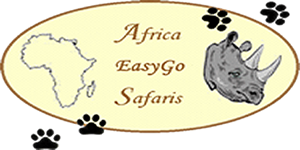With a history dating back to the 14th century, Malindi town was made famous by the visit of the famous Portuguese explorer Vasco Da Gama when he signed the trade agreement in 1498 and erected the coral pillar which was eventually named after him.
The tour starts with a visit to the Arabuko Sokoke forest, covering an area of 420 square kilometers. The forest is a home to high endemic mammals, birds, insects and plants. Our professional guide will take you round for an educational walk showing you the different birds, mammals and plants found in the forest.
Next stop is the Gede ruins. These are the remains of a Swahili town located in Gede, a village near the coastal town of Malindi in Kenya. This village was abandoned in the early 16th century with no possible explanation. In 1948, the remains of Gede were declared a Kenyan national park. You will be taken round the monument while being educated on the history of Gede.
Proceed to Vasco Da Gamma pillar which marks the last point stop in Africa before Vasco Da Gama Sailed across to India in 1498.A guide will brief you while showing you around.
You will then proceed for lunch at one of the town hotels.
Drive to Malindi town for a short tour of the town. You will visit the woodcarving factory, the shopping center among others. From here visit the snake park before driving back to your hotel.
This tour can start from Malindi town and vice versa.
Part of Gede Ruins.
WATAMU MARINE PARK.
Watamu National Park is part of a complex of marine and tidal habitats along the Kenya’s north coast. It is enclosed by the Malindi Marine National Reserve which also encloses Malindi Marine National Park. Habitats include intertidal rock, sand and mud, fringing reefs and coral gardens, coral cliffs, sandy beaches and the Mida Creek mangrove forest. Marine life attractions include fish, turtles, dugongs and crabs.
The Mida Creek forest has a high diversity of mangrove species including:
Ceriops tagal, Rhizophora mucronata, Bruguiera gymnorrhiza, Avicennia marina and Sonneratia alba. These provide refuge to a variety of both resident and migrant bird species.
ABUNDANT BIRD LIFE
• Over 100 species of bird are found in the cultivated gardens, shambas and bush. Commonly seen overhead is the Black Kite, whilst the Common Bulbul, White-Browed Coucal and Speckled Mousebird can be seen scuffling in the undergrowth. Bright Yellow Canaries and Golden Palm Weavers flash in the bush, whilst the Lizard Buzzard and the Lilac Breasted Roller are often seen perched on poles and wires.
Wildlife
The park's coral reefs form the physical and biological backbone of the area. With over 150 species of hard and soft corals, such as brain corals, fan corals and sponges, it provides for abundant nutrients for fish. The main park has over 500 species of fish and the reserve over 1000. There are also whale sharks, manta rays, octopus and barracuda as some of the larger species in the park.
Watamu also has different species of turtles and a turtle watch program which has managed to secure the main park's beach as a 99% viable sea turtle nesting site for endangered sea turtles. This beach is patrolled and monitored vigorously. The turtles nesting in Watamu include the Green, Hawksbill and Olive Ridley turtles. The Olive Ridley species is rare but occasionally comes to the nesting site. Leatherback turtles do not nest in Watamu or Malindi but they pass by through the nearby waters during their migration.





